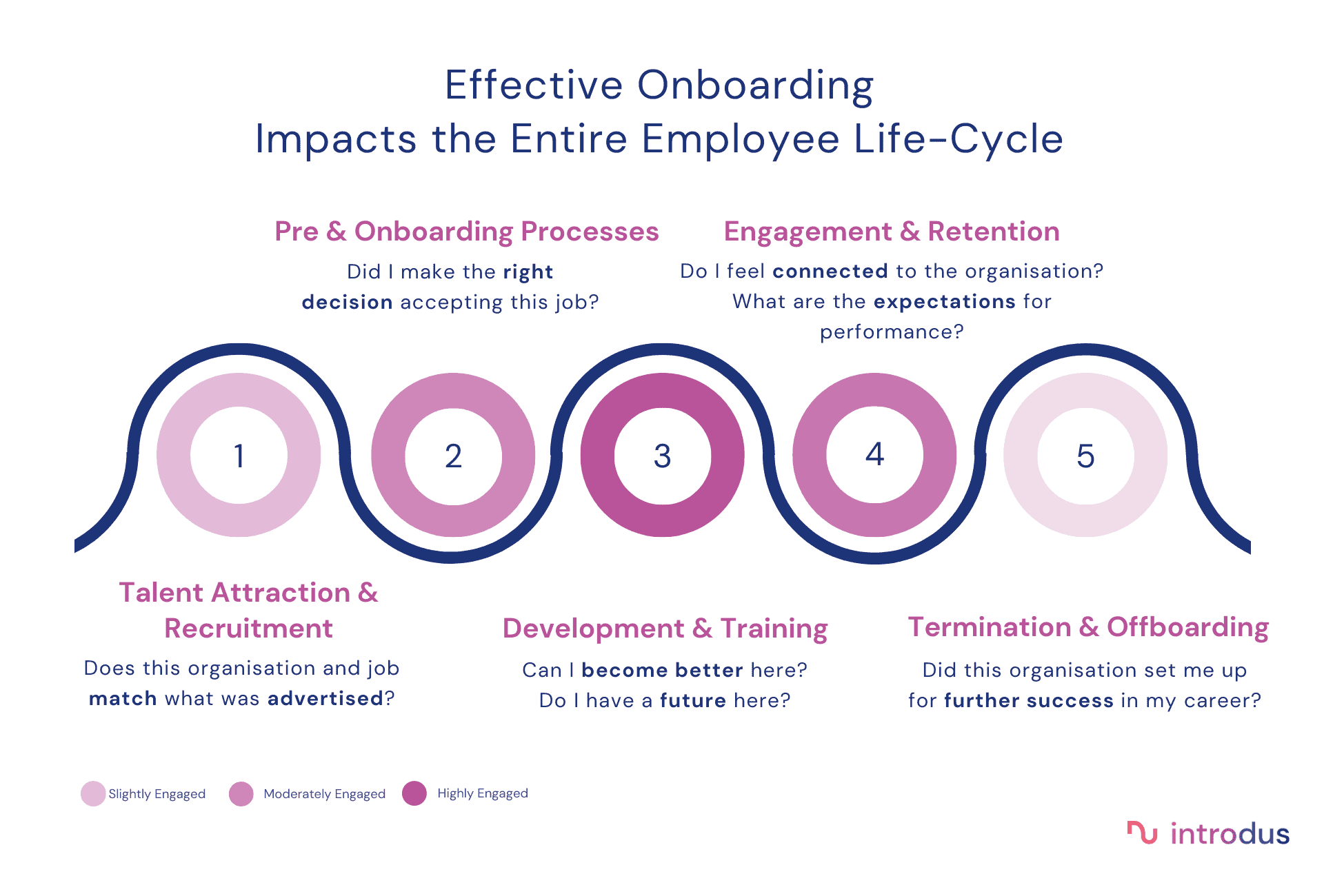How to Develop an Effective Strategic Onboarding
We already mentioned it briefly, effective strategic onboarding keep the employee experience at its core. Onboarding is not a size fits all programme. Each employee has different needs, and brings a different baggage of skills, experiences, needs and desires.
Sure, one cannot expect organisations to craft unique programme for every single employee. It would be ideal, yet not very realistic from a budget perspective. However, having customisable modules is already a great step at the disposal of HR.
So, when making a stratefic onboarding plan, there are some key elements to consider. Let’s review them one by one.
Role and Candidate Understanding
An intensive internal assessment will provide a clear understanding both of the role and of the successful candidate. A comprehensive feedback from the stakeholders that interviewed the new hire can already identify some key elements for the onboarding programme.
With this, an employer can pinpoint the strengths of the newly employed worker and capitalise on them. Additionally, the manager/ mentor can put measures in place to improve any gaps with relevant training activities. No doubt, this will boost the confidence of the new hire.
Collaborative Efforts of Onboarding Planning
Involving the newly employed workers in developing their integration plan is of utmost importance. This includes keeping in touch with the new hires after the acceptance of the job offer and soliciting their input during the design of their integration plan before they resume work. These will be components of a Preboarding plan.
Champion Social Connections
Arranging meetings between the new hire and the company’s key stakeholders will help establish the right working relationships between the new employees and the relevant personnel in the company. Also, it aids the newly employed workers in understanding the vital aspect of the company’s culture. This will thereby aid their integration into the company’s system of operation.
A Clear Roadmap and Milestones
Setting clear milestone integration objectives for the newly employed workers will ease any anxiety and confusion at the job start. This entails having integration goals that the company’s key stakeholders will properly monitor. This is enacted through regular meetings between the new hires and the company management team. It can follow a 30-60-90 time structure, or any other desirable or applicable one.
Focus on Training and Development
As mentioned before, what makes an onboarding process strategic is the future outlook. This means that there has to be a clear development aspect into the onboarding process. This involves having a process that allows the new hires to be anticipatory in their career path. This will prepare them to take on the training or tasks required for career advancement.
No doubt, this will help keep the momentum of the progress of the strategic onboarding.
Strategic Onboarding: Final Remarks
In conclusion, organisations are assured of a cost-effective method to engage with the new hires from day 1 with strategic onboarding. However, employers must make their strategic onboarding activities a living document that is not static but very flexible to earn the confidence of their new employees and get the best from them.
Achieving an effective strategic onboarding that will positively project the company’s image and aid the new hires in attaining optimum productivity. This is made easy with the right employee onboarding software like introdus. For instance, introdus provides a tailor-made onboarding programme that creates wonderful onboarding experiences with multimedia content that simplifies the exercise.
If you want to discover more benefits of a good onboarding process, we highly encourage you to read these two articles: Social Benefits of a Good Onboarding Programme and What Does Onboarding Mean for a Job?
